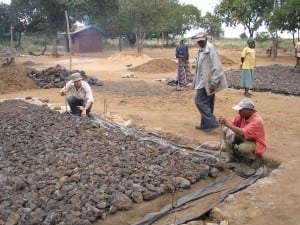Part two in a two-part series
Last week, we discussed the project perspective on development, which starts when a need is identified. It involves appropriate design, community involvement and buy in, quality construction, operation, and maintenance. Commonly, the process is expanded into the project cycle or a program, which is a series of projects. Both are intended to make the development of infrastructure more sustainable. But both rely on outsiders to continuously provide expertise.
By contrast, the local perspective views the issue as the delivery of infrastructure service. In this view, development happens throughout a series of projects under a variety of actors, but sustainability is determined by who is there in the long run: The community, the beneficiaries, local government or community leaders, community-based organizations, local businesses, and so on.
What I’m promoting with this model is a preference for local institutions and a framework for identifying and structuring collaboration.
In these two articles, I argue that projects can be sustainable when local institutions retain the knowledge and lessons learned during the process of delivering an infrastructure project. The local institution, government or community-based organization, acts as a representative of the community, free to work with all the others involved in the project.
Decentralization, or the empowerment of local authorities to plan and administer local development, is an example of this type of approach. However, decentralization has its own challenges, and it presents opportunities for outsiders like us to change our approach, so our projects will not only fix the problems they are designed to address, they can also build up local institutions.
New questions we need to answer
Taking a local view of sustainability requires us to put a project in its context. That means that we must consider the project, processes, and institutions as a whole from the onset. To analyze all three in detail, we should answer the following questions:
Project: Which aspects of the project lend themselves to a collaborative approach? This could include the project type, its impact, its scale, and so on.
Processes: What are the steps of the process? Who does what, and when? How is knowledge developed into capacity and retained? And how does the cycle close?
Institutions: Which institutions (local government and civil society groups) are involved? Which need to be created or approached? What types of capacities need to be increased?
Understanding the above helps us determine institutional arrangements that promote sustainability by considering the following issues:
Roles and responsibilities: In the long run, who stays and who moves on? Who should be doing this work, and what is their record? What roles are there for new institutions (in government and civil society) and what involvement do existing institutions have?
Accountability relationships: With respect to the roles taken by various actors and when, where do lines of accountability connect or break down? What about between actors and beneficiaries?
Opportunities for collaboration: Where and when are there opportunities for collaboration? How are the roles incorporated into the design of the project from the onset?
The hope is that the answers to these questions will somehow improve our projects. If we take this new view, our work could be more useful to communities, and may make the communities more apt to take on additional projects.

Matt Sisul and the lead mason of a classroom construction project in Kenya use a tube level to check the new building’s foundation. Photo credit: Charles Newman
Putting it into Practice
Putting these ideas into action would require only simple changes. For example, let’s take a small-scale project, say a borehole: Instead of hiring someone to drill the borehole on behalf of the community, we could advise a local representative to make the hire. What has changed is the roles. In the first case, the donor is the owner of the project, and in the second case, the local representative is the owner.
On a more complicated project, say a multi-phase irrigation dam that waters crops in several communities, people’s roles would be more complex and would change throughout the phases of development and construction. But the responsibilities of all of those involved would still be clear, from the owner, to the donor, contractor, and consultant, at each of those phases. Local government or organizations may carry out the construction. Community participation could be written into the contract, with clearly defined opportunities for training skilled laborers, who would then be suited for operation and maintenance, as well as evaluation. Technical consultants would still participate, but in a more advisory role than an active one.
The advantage in both cases is that local actors will have participated in contractual arrangements as an institution, and they will have negotiated their own roles at the onset. Clearly, not all projects will fit perfectly in this model. Many of these arrangements, however, are already common in infrastructure projects in developing countries. What I’m promoting with this model is a preference for local institutions and a framework for identifying and structuring collaboration. That way, in practice, these development projects are more useful to communities, which, in turn, are better equipped to execute new projects.
Matt Sisul is a civil engineer and former President of the New York Professional Chapter of Engineers without Borders. He is currently studying infrastructure service delivery at NYU Gallatin School of Individualized Study as a Reynolds Fellows in Social Entrepreneurship. Readers can reach him at this email address: matt (at) ewbny.org, and he would appreciate hearing comments.

